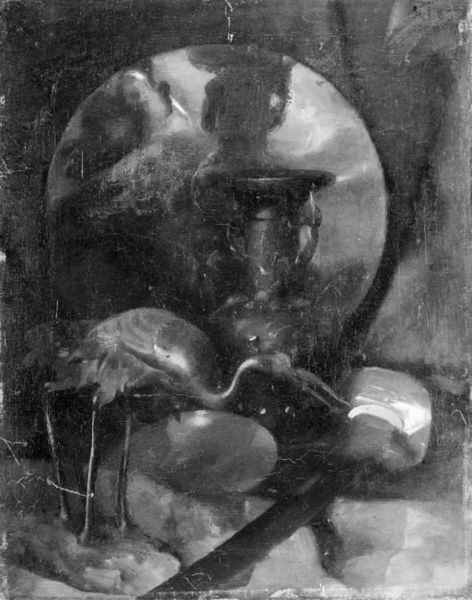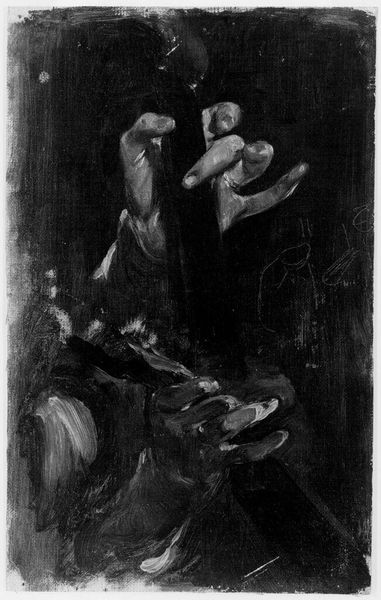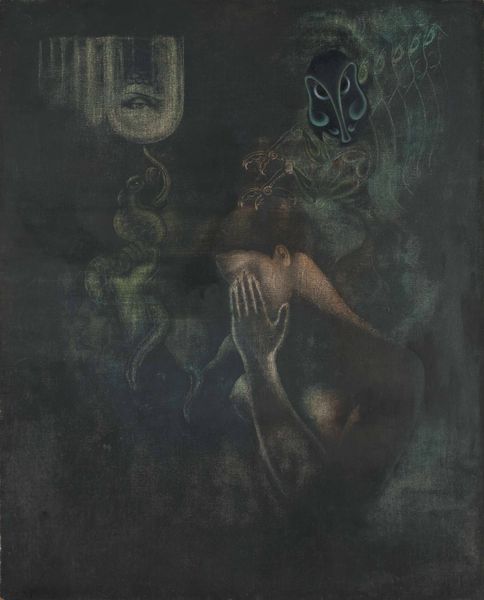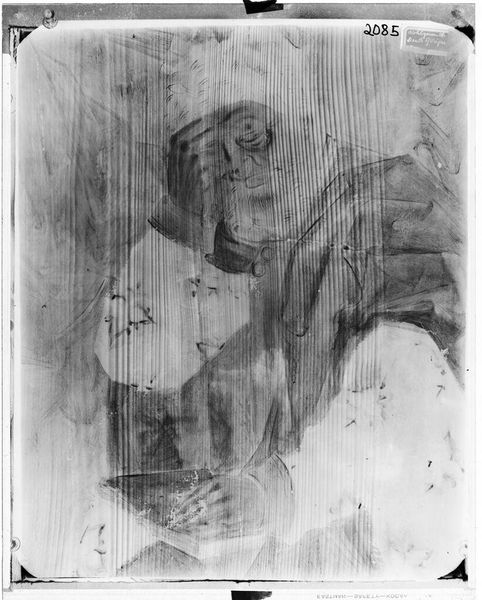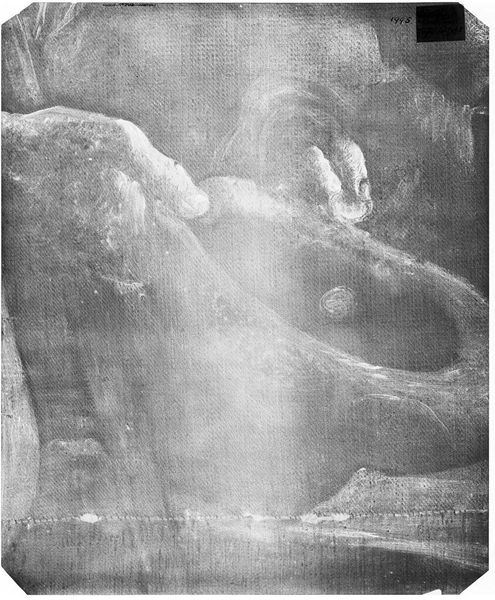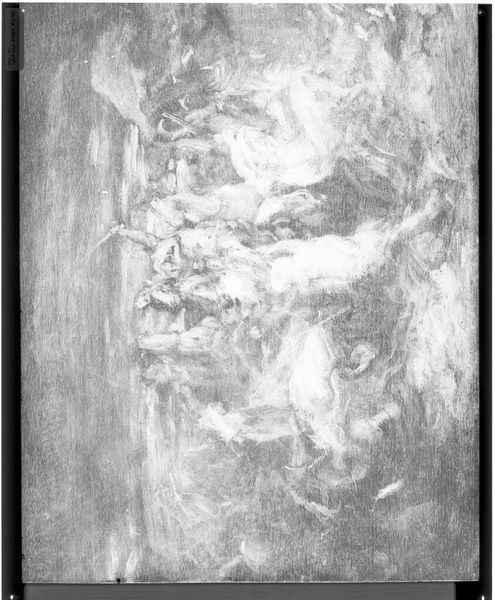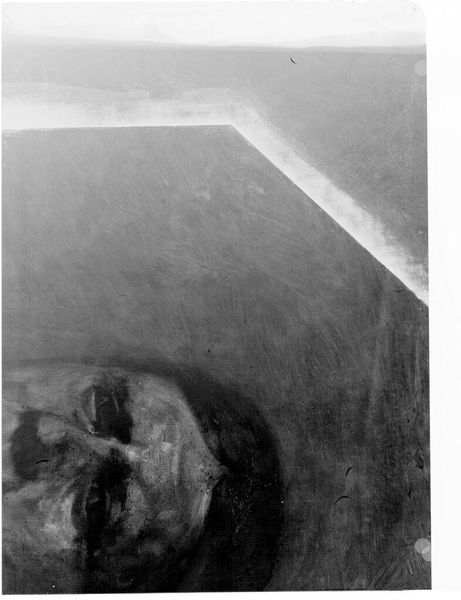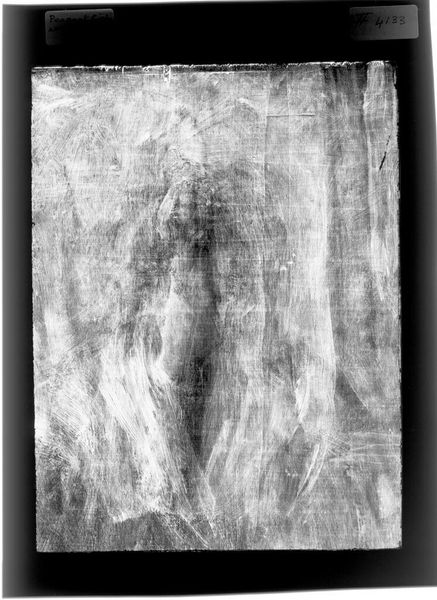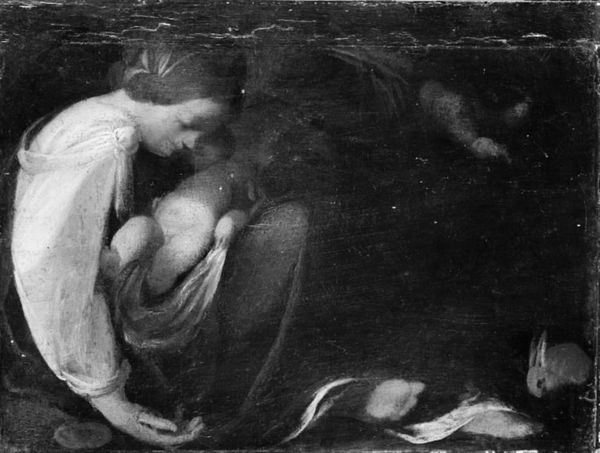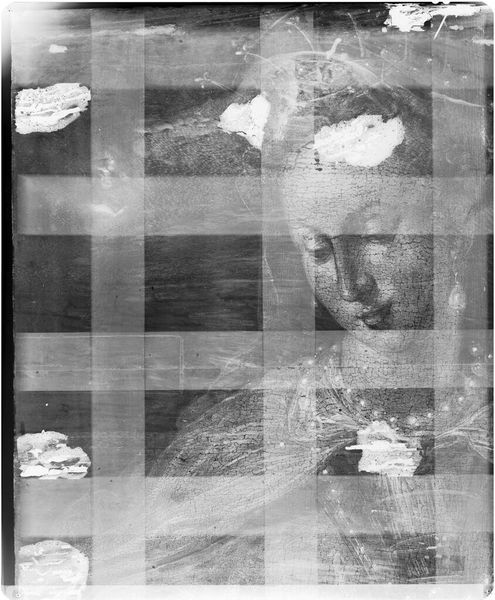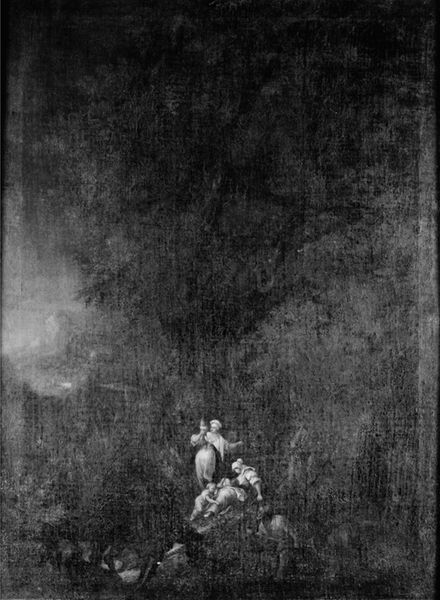
painting
#
portrait
#
baroque
#
painting
#
history-painting
#
monochrome
#
monochrome
Dimensions: 47 cm (height) x 33 cm (width) (Netto)
Curator: Welcome. We're looking at Matthijs Naiveu's painting, "Saint Jerome and the Lion," created sometime between 1662 and 1721. It’s currently held here at the SMK, the National Gallery of Denmark. Editor: My immediate thought? This is strikingly stark. The monochromatic palette and dim lighting amplify the themes of solitude and contemplation. It is almost austere in its visual language. Curator: The artist's choice to limit the palette is interesting, isn't it? Consider the economic aspect. Pigments would have been costly; such limited color could reflect a studio's financial constraints. How do you see it interacting with the traditional boundaries of history painting during this period? Editor: The key figure, St. Jerome, traditionally embodies knowledge and faith. We see his familiar attributes, a skull signifying mortality, and of course, the lion, a symbol of his transformed, saintly power. But I find a unique element, how it conveys vulnerability. What reads to you in this context? Curator: Well, note that Naiveu also explored the use of cheaper materials, evident perhaps in some degree of paint loss. Consider also how images of the Saint are a form of consumption, bought and displayed to project certain social values around erudition and piety within households. How the means of producing it affects its meaning and subsequent reception. Editor: True. It's intriguing how even in a work with limited resources, these enduring archetypes persist. The flickering lamp in the background, for instance, can be seen as representing the light of faith combating ignorance. Or knowledge against oblivion. What this single man with only his faith, intelligence, and conscience provides. Curator: I think understanding its making encourages a richer comprehension of the socio-economic landscape, allowing for insights into production limitations versus cultural symbols conveyed. Editor: For me, these symbolic gestures reach beyond the immediate visual experience; they unlock layers of cultural meaning that resonate even now. Curator: Precisely. By understanding art, its consumption and making within society provides more inclusive knowledge of an artwork beyond the surface level appearance. Editor: Agreed. Understanding the image allows us to further expand to its contextual meaning, amplifying cultural understandings of symbolic continuity and transformation.
Comments
No comments
Be the first to comment and join the conversation on the ultimate creative platform.
